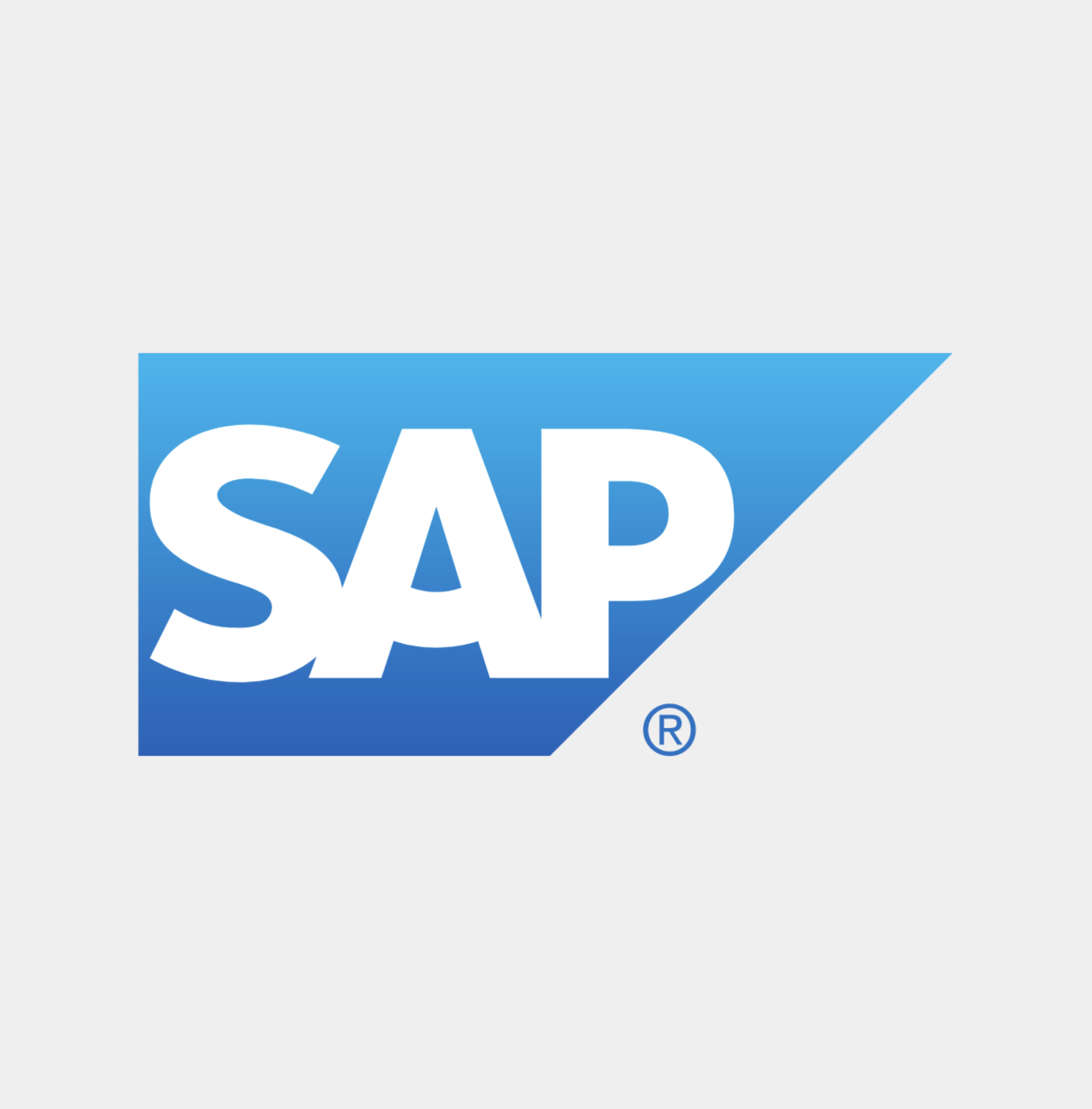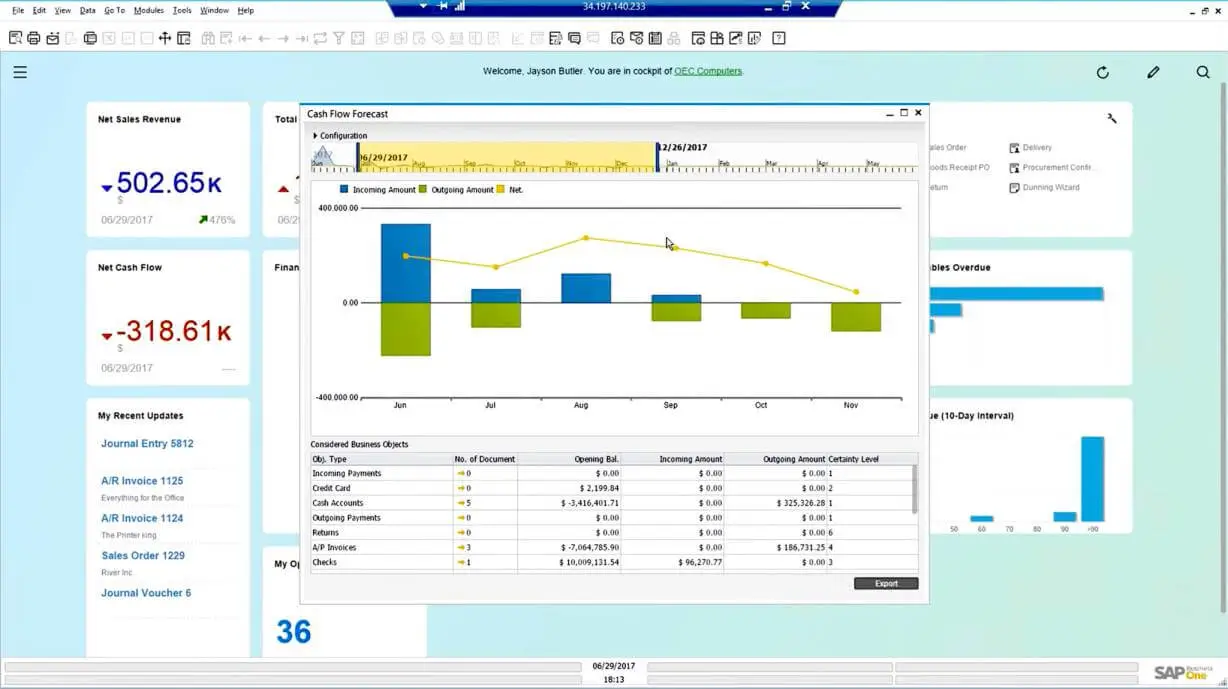SAP Software
SAP is an end-to-end enterprise solution provider specializing in enterprise resource planning (ERP), business processes, and organization management tools for clients globally.

Fifty years after its founding, SAP is one of the largest software companies in the world. Building solutions for enterprise organizations, 80 percent of customers are SMEs, while the vendor’s client network also contains 94 percent of the world’s 500 largest companies. Starting with financial accounting and inventory management in the 1970s, the company has gradually built an innovative technology stack for enterprises that extends today to its in-memory database SAP HANA and cloud solutions.
Read more: Best ERP Software & Systems for 2021 (CIO Insight)
In this definition...
SAP Products and Solutions
SAP has a long list of products to meet IT, and business process needs for small teams to enterprise organizations. Overarching solution areas for the vendor are:
- Enterprise Resource Planning (ERP) and Finance
- Custom Relationship Management (CRM) and Customer Experience (CX)
- Network and Spend Management
- Supply Chain Management
- Human Capital Management
The SAP Business Technology Platform (BTP) is the foundation for the company’s applications and includes data management, analytics, application development, and more.
SAP Competitors
SAP Enterprise Resource Planning (ERP)
The multinational’s company roots are in ERP, developing software that helps organizations manage foundational business processes like finance, HR, manufacturing, and procurement.
With a few decades of experience and multiple acquisitions of other top ERP providers, SAP’s solution is a standard for the rest of the industry. Core features of SAP ERP in 2021 include asset maintenance, finance management processes, product lifecycle management, customer service analytics, and supply chain management with sourcing and procurement resources.
Learn more: 7 Reasons Why SAP Is A Market Leader in ERP (TechRepublic)

Cloud ERP: SAP S/4HANA
Ready for the cloud era, the vendor launched SAP HANA in 2011, transforming the speed at which organizations could process data. In 2015, the newest generation of the company’s ERP technology hit the market: S/4HANA. Utilizing its in-memory database, S/4HANA uses embedded analytics, intelligent process automation, and artificial intelligence to simplify data management for any industry.
Also: Check out Datamation’s 2021 review of the SAP Cloud Platform, rebranded to BTP.
SAP SuccessFactors Human Experience Management (HXM)
In 2012, SAP acquired cloud-based human capital management platform (HCM) SuccessFactors. Today it’s the vendor’s namesake HCM solution vertical for employee experience management, core HR and payroll, talent management, HR analytics, and workforce planning.
As a stack of SaaS HCM solutions, the recently rebranded SuccessFactors Human Experience Management (HXM) Suite aims to upgrade the employee experience surrounding these essential business systems. According to the vendor, over 180 million users representing every nation use the vendor’s HCM.
Read more: SAP listed on TechnologyAdvice’s Best Procurement & Purchasing Software 2021.

Recognition and Reviews
SAP has a suite of solutions that contribute to its international recognition. This section looks at where the vendor’s products and services sit with the Gartner Magic Quadrant, Gartner Peer Insights, and the Forrester Wave.
Gartner Magic Quadrant and Gartner Peer Insights
- Visionary – Analytics and Business Intelligence Platforms (2019-2020)
- Leader – Multiexperience Development Platforms (2020)
- Leader – Enterprise Integration Platform-as-a-Service (2020)
- Visionary – SAP S/4HANA Application Services (2021)
Also see: Top Data Analytics Tools & Software 2021 (Datamation)
On Gartner Peer Insights, the blue-chip vendor has more than 3600 reviews in over a dozen solution areas. The company’s top three reviewed solutions, scores, and highlighted features currently are:
| Gartner Peer Insights | Ratings | Reviews | Praised Features |
| Analytics and Business Intelligence Platforms | 4.2 | 1004 | Ease of use for content authors, data source connectivity, and visual exploration |
| Cloud Database Management Systems | 4.3 | 497 | Customization, integration, and deployment, and peer community for technical support |
| Cloud HCM Suites for Large Enterprises | 4.3 | 455 | Understanding of org needs, Core HR and Payroll tools, and service and support |
The Forrester Wave
- Challenger – eProcurement Platforms (2019)
- Leader – Data Management for Analytics (2020)
- Leader – Customer Identity and Access Management (2020)
- Leader – Cross-Channel Campaign Management (EMSS Modules) (2021)
- Leader – Multimodel Data Platforms (2021)
- Strong Performer – Robotic Process Automation (2021)
Company Background

SAP started in 1972 as System Analysis and Program Development, later rebranded to just its initials in German. Redeveloping a legacy Xerox software, a quintet of IBM engineers built their first enterprise-wide software for integrating business processes and data processing. Not long after, the company launched its ERP solution for financial accounting, leading to the development of its database technology.
Now headquartered in Walldorf, Germany, the vendor has more than 100,000 employees with offices in 130 countries. The multinational vendor also boasts 22,000 partner companies and 200 million cloud users.
Also read: SAP Develops SAP Business Network (Datamation)
Growth, Acquisitions, and Financials
As one of the largest software companies in the world, SAP has a market capitalization of over $172 billion in 2021. Five decades after its founding, the vendor has made 70+ acquisitions to build and enhance its solutions continually. Notable acquisitions include:
| Acquired | Industry Segment | Year | Price |
| BusinessObjects | Business intelligence | 2007 | $6.7 billion |
| Sybase | Enterprise and mobile | 2010 | $5.8 billion |
| SuccessFactors | Cloud-based HCM | 2012 | $3.4 billion |
| Ariba | eCommerce and B2B | 2012 | $4.3 billion |
| Concur Technologies | Travel and expense management | 2014 | $8.3 billion |
| Qualtrics | Business data analytics | 2018 | $8 billion |
In October 1988, the German vendor went public on the NYSE under the ticker symbol SAP. Between 2019 and 2020, the company’s gross revenues fell within a percentage point from $27.553 billion to $27.338 billion. At the same time, gross profit rose 1.32% from $19.2 billion to $19.45 billion last year.
Read more: SAP Acquires AI HR Platform (Datamation)
SAP Business One Review (Video)
Recent Coverage
- SAP vs. Oracle: Top Tier ERP Tools 2021 (TechnologyAdvice)
- The Best Supply Chain Management Software & Tools (TechnologyAdvice)
- SAP and IBM Partnering on Cloud Finance (Datamation)
- Best Manufacturing Resource Planning (MRP) Software 2021 (TechnologyAdvice)
- SAP Seeks Cloud Lift from Partners (Channel Insider)
- Best Procurement & Purchasing Software 2021 (TechnologyAdvice)

